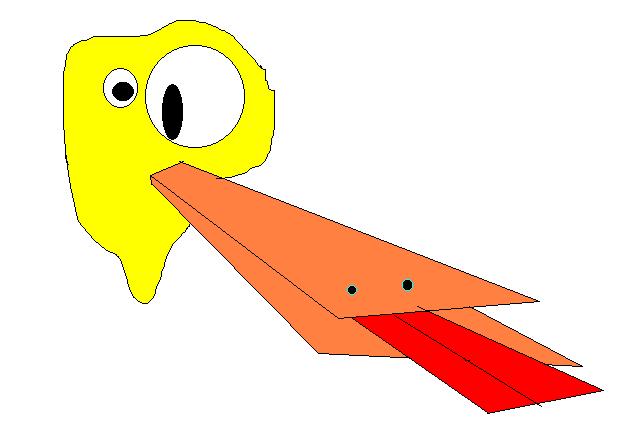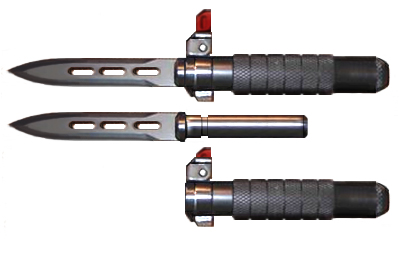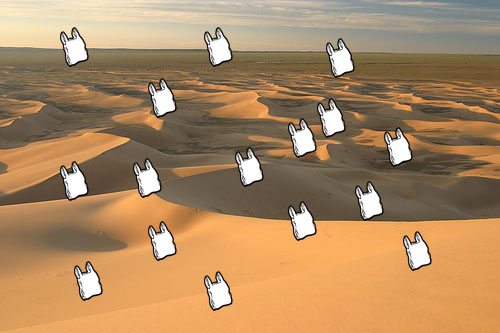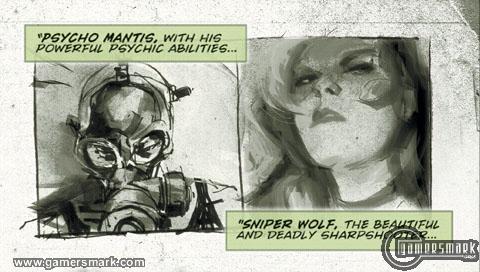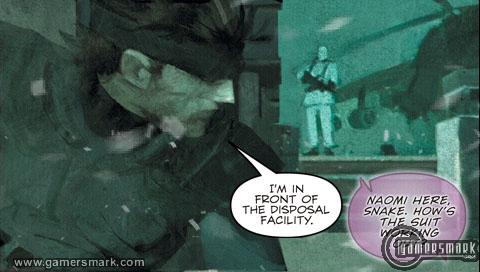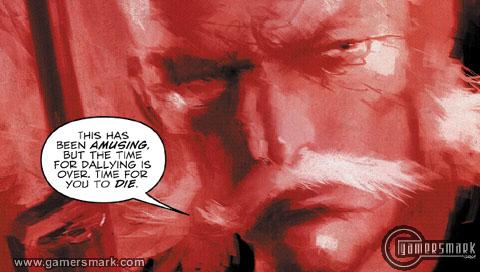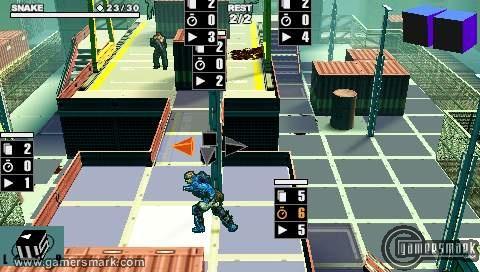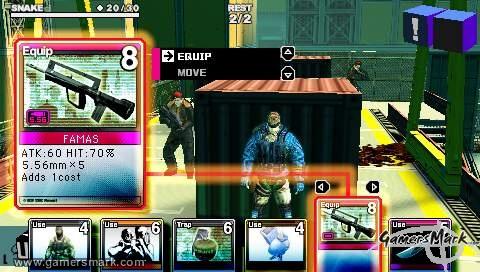Developer/Publisher: Konami || Overall: 8.7/10
If you’ve ever thought a Metal Gear game would fail to deliver an amazing experience, shoot yourself now. Metal Gear Ac!d takes a completely different spin on the franchise in what can be best described as a “card-based-strategy-board-game.” Similar to strategy games like Final Fantasy Tactics, the major difference between this game and the rest of the card-based genre is that Ac!d is not an RPG, as cards (and luck of the draw) dictate every part of the game. Metal Gear Ac!d delivers a truly unique experience, while still including all the major elements from the Metal Gear Solid series its fans have come to know it for, including interesting characters, and an entertaining storyline.
Like most people who heard about the game being card-based when it was first announced by Konami, it was left to question whether the game would catch on as the “normal” Solid games did. For me, it was hard to imagine what the game would actually be like, and whether or not the gameplay would measure up to the Solid series. When I finally loaded the game for the first time, I went in with lackluster hope that this game would be as good as the Solid games, but I kept an open mind about it. Recently becoming a fan of the Solid series, and just finishing Metal Gear Solid 3 about a month ago, I was ready to get into another Metal Gear game; Metal Gear Ac!d exceeded my expectations.
Taking place in the future (the year 2016 to be exact), the game starts with an airplane being hijacked. The person or persons behind the hijacking are not known, nor is their intent. The plane is filled with a muscle relaxant called vecuronium bromide that could be fatal if inhaled in excess. To make matters worse, a major presidential candidate named Senator Hach is aboard the airplane. The hijacker demanded only one thing: the prompt delivery of the mysterious project known as “Pythagoras.” This is where you (Solid Snake) enter. The stage has been set, and Snake is sent to a secret base owned by a corporation in the Moloni Republic, located on Lobito Island. It is here that Snake will try to figure out what exactly “Pythagoras” is, as well as uncover the mystery and past events which occurred on Lobito Island, in which Snake plays a big part. About a quarter of the way into the game, you’ll join up with a female agent named Teliko, who will help Snake along the way, and act as a team together. She is also a big part in the story.
The way the story is delivered, Metal Gear Ac!d seems like it shares events from the Solid games, because there are light references to them. For instance: “I’ve been in worse than this before.” All in all, the story is completely different from any other Metal Gear game, and seems like it could be the beginning of a completely new story arc for Snake, but I wouldn’t reject the idea of Ac!d being another part of the main Metal Gear storyline. However, it seems at times like they were trying to make a new Metal Gear story detached from the main timeline, so one has to wonder. Story is either shown as in-game animations or through the usage of drawn stills. While it was initially a let-down there weren’t any traditional CG cutscenes, the artistic style of the stills is fairly appealing as an alternative, and it helps in creating a different approach for Ac!d in storytelling devices when compared to it’s console brethren.
The actual gameplay itself takes a little bit of getting used to, so it’s good that the first couple stages serve as a tutorial; it helps out tremendously in learning the games basic functions. There are four different types of cards you can use through the game: Weapon, Item, Support, and Character. A card can usually be used in two ways: for the special ability grafted into it, or to move. While most cards have this basic option, there will be a few cards that only allow you only one option.
While the basic idea of how to use the cards is easy to get a hang of, they tossed in a bunch of different card characteristics and the vital feature of the game, “Cost.” Cost, as defined by the game, is the amount of time it takes to do a particular action, and is represented on the cards you can play as a big number in the right corner of the card display. Cost directly affects the order your characters and enemies take their turns in, so the more cost you accumulate during your turn, it’ll take longer for you to have your turn again. While Cost is the only aspect of a card I ever really paid attention to, each card has a characteristic called “Interference.” Interference only matters when you equip things to an equipment slot. The Interference of an equipped card can affect cards equipped next to it, such as the power of a weapon and other fairly unimportant things. I never worried myself with Interference, as I hadn’t directly noticed anything different that happened with Interference. It will take a few stages before being able to fully understand how to use the cards efficiently, but once you get used to actually using the cards, your only problem will be in what order the cards are drawn in.
Packed with nearly 200 unique cards, Metal Gear Ac!d offers lots of options for the cards in your deck. When you start out the game, you are able to place 30 cards in your “deck” (which you can compile through the “Intermission” screens between stages of the game), but as the game continues that number will rise higher and higher, allowing for a more customized deck. If you don’t want to deal with manually customizing your deck, you can have the game create the best deck you can have from the cards you currently have.
There are a couple ways to acquire cards through the game. The primary way you’ll achieve cards is by buying them in 3-card Packs from a deck that contains cards that are name after and unique to prior games in the Metal Gear series. Each pack costs a certain amount of points which are achieved after completing a stage. In total, there are four card packs to choose from, but they’re only available to buy after certain points of the game, and each new one costing more per deck than the one before it. You’re told as to when you’re able to buy packs of cards from new card decks because a commercial-like advertisement will pop in after completing a stage/viewing a story scene. You can also gather a few cards by collecting the Packs that are floating around in-game and earning them as a clear bonus.
Using some “special” cards activates a special cut-scene from the game of the deck was based on. For instance, when you use the Cyborg Ninja card, you will see a cutscene from Metal Gear Solid. During the beginning of the game, you will only see characters from the original Metal Gear Solid (the PSOne version). Not until later in the game do you actually see cutscenes from the PlayStation 2 Metal Gear Solid games. It’s impressive that the PSP can replicate the graphics of the PlayStation 2 so well.
The Metal Gear games have always been know for their unique, over-the-top bosses who are usually require doing things that are out of the ordinary to beat. While there wasn’t a whole group of bosses to fight in Ac!d like in the Solid games, Ac!d only had two bosses to really speak of (excluding the final boss), and only one of them actually stands out from regular gameplay, requiring you to do something completely different. To say the least, the amount of bosses worked into the story is not fulfilling, as much of the game is taken up by regular game play. It would have been nice to see more boss stages where they used the aspect of the cards to create a unique situation. This isn’t the only annoyance either. There are instances early in the game where Snake will stop in the middle of his move in order to show some story. This can leave you screwed without any cards to use so that you can move. Fortunately, the occurrence of these situations stop around one third of the way into the game.
As noted above, there are a few cutscenes of characters from the Solid games, as well as a few from the original Metal Gear games on the NES. However graphically, the game isn’t too shabby, especially for a launch game. Ac!d sports graphics that could be best described as “a smoothed out PSOne game.” When one considers the graphics are coming from a handheld, they’re pretty amazing. As I said before, there are no animated cutscenes, so the only movies you’re going to be seeing are the ones from the character cards. I also mentioned that most of the games story scenes are told through in-game animations and still-drawn pictures. I personally liked the still pictures, but they do give off a feeling that the game was rushed to meet the PSP’s launch date, as there isn’t a lot of variety in the pictures you actually see.
The musical score is nothing less than what should be expected in a Metal Gear game; in other words: great. The music accompanies what is taking place on screen, carrying the mood of the game and the specific events that are unfolding, whether they be on Lobito Island or in the airplane. While the music is great, the fact that there are mostly no voice-overs detracts from the experience. As a whole, there is very little actual voice-work at all. The only time you’re going to hear someone talking is during the “commercials” for the new decks that come out, and one word that a boss says before an attack. David Hayter-enthusiasts (the voice actor who plays Snake) might be disappointed at this fact. Once you get used to having no voice-overs in the game, it won’t be that big of a deal, but again, the game feels more rushed because of it.
Metal Gear Ac!d is an excellent extension of the series, and provides an exciting, new way to play the Metal Gear series. The somewhat experimental use of cards in the game can be make it hard for players to get into right off the bat, if you stick with the game, a rewarding experience will develop, as will a new storyline. Metal Gear Solid enthusiasts will definitely enjoy the game, but may find it hard to adapt; it isn’t part of the normal stealth-action genre Metal Gear Solid helped to define. Hardcore fans of the series will find more differences between Solid and Ac!d, but in the end will likely find the game to be worthwhile.

